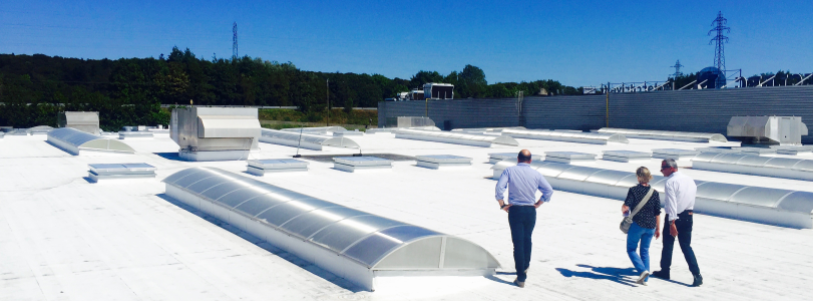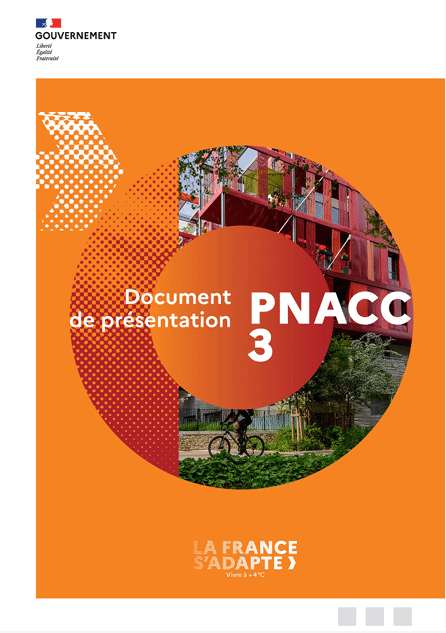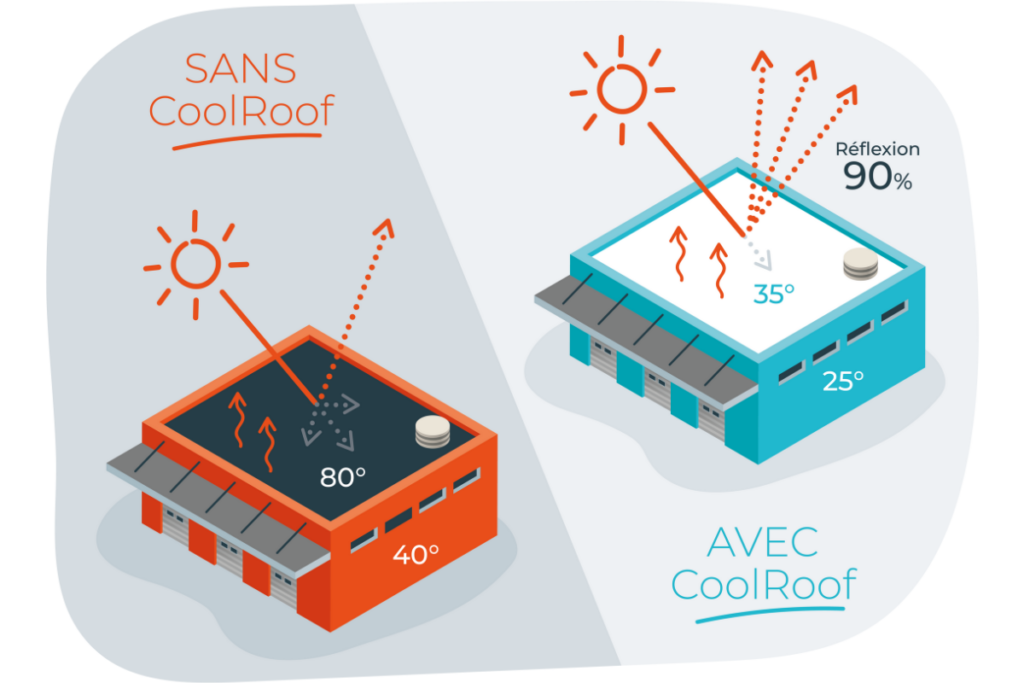For years, the solutions are called “low-tech” had to prove their worth on the field prior to being collected at their fair value. Today, the official announcement falls as a highlight : the National Plan of Adaptation to Climate Change (PNACC3) now incorporates the coatings thermo-reflective as adaptation tools full. And if this government recognition was the trigger of a transition to the scale for the cool roofing ?
In Cool Roof France this validation of the cool roofing by the public authorities marked a turning point. It is the recognition of a solution that is both simple, efficient and immediately available. It is also a strong signal sent to all building owners, public and private, in search of concrete answers to the climate crisis and energy.

The 3ᵉ National Plan of Adaptation to Climate Change, was officially presented on march 10, 2025, made the observation of climate change are now tangible. Heat waves are no longer the exception : they become structural. In view of this, air conditioning, long considered to be a default response, appears more like a leak in before the energy and climate change.
With more than 200 concrete actions and a fifty structuring measures, this plan marks a clear commitment : prepare all sectors of activity, to live with climate change, acting now. The PNACC3, invites them to spend a compensation logic to a logic of prevention, incorporating passive solutions are able to limit the overheating to the source.

Among the devices recognized, pavements reflective roofs, including the cool roofing is an exemplary form, make a stunning entrance in the texts. For example, in Measuring 9 of the PNACC3, devoted to theadaptation to high temperatures, put in black and white the importance of rethinking the built environment and the urban architecture to integrate devices with passive cooling. Throughout the Plan, the terms of cool roofing demonstrate an awareness of institutional : focus on prevention passive rather than on solutions that are energy-intensive clearing.
It is a regulatory recognition that Cool Roof France greet with conviction, after more than ten years of commitment to energy efficiency, social justice and the décarbonation buildings.
The principle of the cool roofing is based on an idea as simple as it is powerful : to reflect the sunlight rather than absorb it. By covering the roofs a white liner with a strong power-reflective, it significantly lowers the surface temperature, which helps reduce the interior temperature of buildings by up to 7°C.

The benefits are immediate:
As many arguments that explain the positioning of Cool Roof France, pioneering the industry since 2015, which the coatings based on oyster shells recycled are now deployed on more than 1 million m2 in France and internationally.
This integration PNACC3 is not an isolated case. It is part of a larger movement, highlighted by a recent article in the media reference Environment Magazine, published on April 3. Specialized magazine in the issues of ecological transition, innovation, urban and adaptation of the territorial Environment Magazine is a source of information essential for the communities, businesses, the environment and public decision-makers.
In this publication, entitled ” Heat waves, energy bills and PNACC3 : the air conditioning is no longer a viable solution “,Cool Roof France is cited as one of the major players in this transition to buildings that are more sober.
👉 Read theoriginal article on environnement-magazine.fr
François Hascoet, our key Account manager, summarizes our approach :
By adopting our proven solution, immediately applicable and economically viable, [nos clients] commit today to reduce their energy consumption and their cost of air conditioning, while maintaining the thermal comfort of the occupants in the face of heat waves and by limiting their carbon footprint.
Whether to refresh a school, extend the life of a public building or reduce the energy costs of a real estate, the conditions are ripe for action. The tools are available, the data are available, the feedbacks are positive. And now, the regulatory framework supports this transition !
We are honored that Cool Roof France and its solutions thermo-reflective roofing is today recognized in the PNACC3 and highlighted in the media reference Environment Magazine. This recognition, we are committed to continue our efforts, alongside of all those who, on the field, make climate adaptation a priority.